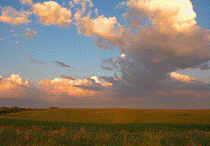North American Prairie Conference
Date of this Version
2004
Abstract
Freshwater mussels (Bivalvia: Unionidae) once cobbled the stream bottoms in the Cajun Prairie ecosystem in south-western Louisiana. The development of canal systems for aboveground irrigation of rice fields during the last century provided additional habitat-often the canals were likewise cobbled with mussels that formed diverse communities. This paper introduces the 31 known species, their general ecology and their distributions. These mussels develop a 'reef'-like benthic community that is home to a variety of plants and animals as parasites and haptobenthos. Freshwater mussels are on the decline numerically as well as in diversity as a result of human activity, namely loss of seepage or spring-feeding (shallow groundwater discharge) by agricultural/urban compaction of soil, sedimentation from erosion, channeling of natural streams by dredging, and poisoning of waterways from urban and industrial runoff and dumping. The once-spring-fed streams flow intermittently functioning more as drainage canals as a result of the destruction of prairies by agriculture and urbanization. The return of prairies and forests reinitiates the spring-feeding by shallow groundwater discharge to streams and minimizes runoff of agrochemicals and urban chemicals, thus providing an opportunity for revitalizing freshwater mussel communities.


Comments
Published in Dave Egan & John A. Harrington, editors, Proceedings of the 19th North American Prairie Conference: The Conservation Legacy Lives On..., University of Wisconsin-Madison, August 8-12, 2004 (Proceedings of the North American Prairie Conference, 19), Madison, WI: University of Wisconsin-Madison, 2004.